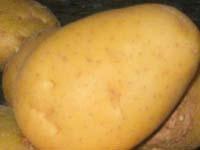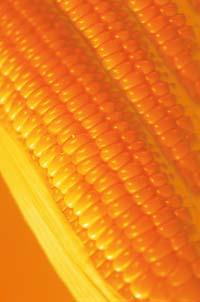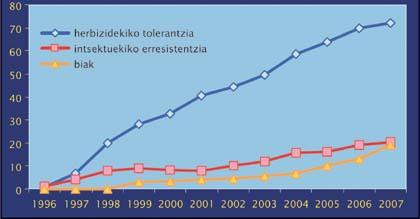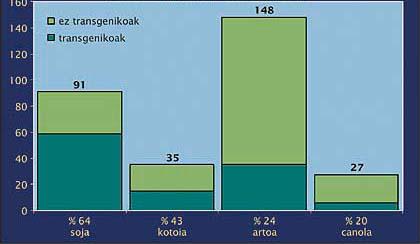Abundant harvest of transgenic crops

The potato that has provoked disagreement in Brussels is transformed to be more suitable for the industry. In fact, potato contains two types of starch, amylose (25%) and amylopectin (75%), and the first is cleared industrially for its futility. The other is used to make paper paste and bags similar to plastic ones.
In order not to waste so much starch, the company Basf has developed a transgenic potato without amylose. To do this, the potato is inactivated by the gene responsible for creating amylose. In this way, all potato starch is of industrial utility and, in addition, the remaining remains can be used to feed the animals, since it does not affect their health. This is what Basf engineers say, at least, as well as the organization that is responsible for food security in the European Union.
But not everyone has it so clear. And it is that the potato has another peculiarity: they have introduced a gene resistant to canamycin antibiotic. This is not acceptable to many groups and social agents, as Greenpeace recalled that in 2004 the European Union decided not to authorize antibiotic-resistant GMOs.
The first GM was approved by Europe in 1998: Bt corn. This transgenic maize contains a gene from the bacterium Bacillus thuringensis. This gene produces a protein against one of the insects that damage corn, making it an insect-resistant maize that destroys crops. All GMOs authorized by Europe since 1998 have been genetically modified maize varieties.
Not all European Union countries behave in the same way. In France, for example, the planting of a variety of transgenic maize has recently been banned, while in Spain more and more transgenic maize is being produced. This is explained in the final report of the ISAAA.
Continuous growth
ISAAA is responsible for the applications of biotechnology in agriculture and publishes annually the data of the production of GMOs worldwide. According to this data, Spain remains the largest producer of GMOs in the European Union and, in addition, has consolidated its position by producing 40% more GM maize in 2007 than in the previous year.

Within the Spanish state, Catalonia and Aragon are the countries where it is most performed, but in other places, transgenic plantations have also increased significantly. For example, in Extremadura they have tripled in the last year and in Navarre they have doubled. Thus, 21% of the maize made in the Spanish state is transgenic.
With this data, Spain is among the 12 largest producers in the world. In the first place are the United States, followed by Argentina, Brazil, Canada, India and China. The ISAAA organization has highlighted that there are more developing countries than those developed among producers, since the beginning of GM planting. Specifically, in 2007, GMOs were planted in 12 developing countries and in 11 developed countries.
According to ISAAA and other institutions, GM plants can be especially beneficial to people in developing countries. For this purpose, they have created, for example, rice rich in vitamins A and wheat that is not lost with droughts. However, for the time being, the owners of the varieties cultivated in developing countries belong to the industrialized countries and import much of their production.
Besides this, the country that has grown more proportionally in the production of GMOs is India for the third consecutive year. Between 2006 and 2007 it has increased its production by 67%, highlighting cotton. In China, transgenic cotton has also grown a lot, so last year more than two-thirds of planted cotton was transgenic. They also grow papaya and transgenic poplars.
In absolute terms, Brazil is the country with the highest growth of GMOs. There it is mainly made soy and cotton, but the production of transgenic sugar cane is also increasing. It is used to manufacture ethanol and from now on those of ISAAA believe that it will occur even more.
But most are done in the United States. They produce soybeans, maize, pumpkin, papaya and transgenic alfallas, among others, and 93% of cotton produced last year was transgenic. The superiority of GMOs is evident, but not everyone is clear if they are as good as biotechnology companies say.
In fact, researchers from the University of Georgia (USA) They have investigated whether transgenic cotton produces greater benefits than conventional varieties, and by comparing the benefits of different varieties with different methods of production, it has been concluded that the variety of cotton does not influence the benefits, but rather the methods of production. Therefore, it seems that the farmer who wants to increase his profits is better to look at methods than buying transgenic seeds or plants.


Published in Gara
Buletina
Bidali zure helbide elektronikoa eta jaso asteroko buletina zure sarrera-ontzian











